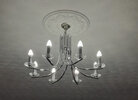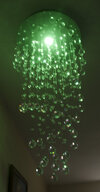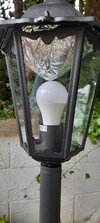So we have 9.80665 newtons in one kilogram, 4.2 joules in a calorie, the newton is 100,000 dynes, ups where did the 1000, 1000,000 go?
The distance is so easy, one minute of movement around the world is a nautical mile, it does not matter if at sea level, or a satellite, the kilometre should have also been the same, but some Frenchman got his maths wrong. So we will not use the dyne we will use the erg instead, ups, that also does not drop into the power of 3, 6, 9 etc.
I don't have to think, I remember 1760 yards are in a mile, however only an imperial mile. We in the UK it seems invented the metric system, but the speed limit is still shown in miles per hour.
So we buy a car made in Japan, and the speedo says MPH, is that UK MPH or US MPH, have you even seen imperial or US marked on a speedo?
Maybe I have made a mistake, if I have then it points out how poor the system is, I pick up my vernier and I never use the scales the digital display shows in ½ thou increments, or 0.01 mm. It can measure up to 6" where my micrometer is limited to ½" but the batteries on my micrometer and slide rule never become discharged.
But back down to reality, I moved into a house with a single 150 watt tungsten pearl light bulb for the whole of my living room. The largest LED I could find in local shops was 15 watt, which was like a tocH candle. So I wanted to change the fitting for one which would give out the same light as a 150 watt bulb. Clearly, some sort of chandelier with multi bulbs was called for, and most of the light will be spread throughout the room by reflecting it off the ceiling, so bulbs need to have a base at the bottom, this also keeps the electronics in the bulb cooler, but as we look at chandeliers the bulb size drops, as they typically use an E14 base rather than a BA22d, so max bulb size which can be obtained in local outlets is 6 watt.
Google tells me a 150 bulb has an output of 2100 lumens, and a 6 watt LED typically 480 lumens, I thought that a little low, so checked a few, and it does seem to be what is quoted, so the chandelier would need just over 4 bulbs, in fact I got a chandelier with 8 bulbs,

and I still need to use standard lamps with uplighters and reading lamps. Either the 150 watt bulb was over 2100 lumens, or the 6 watt are under 480 lumens, or a lumen is no good to work out light output?
With my landing light, I was looking at three things, what it looked light,

how well it lit the area

and the ablity to reduce the light output at night so it would not wake people, the danging bits actually do help spread the light, however even with 5 x 6 watt GU10 bulbs it is not bright enough to stop the emergancy tourch lighting at top of stairs, I can select centre or outer lights, and also centre is colour changing and dimable, so it does what I want, however the emergancy tourch does not light in daylight, but does with the landing light on, so clearly not really bright enough.
On my move from tungsten to LED I did make errors, the LED seems bright, but sit down and try to read a book, and they have failed, last house living room had 2 x 100 watt lamps, swapped to chandliers so 6 x 40 or 60 watt, it would depend what was left in the multi-pack, on going to CFL went to 10 x 5 watt, nowhere near enough light, then 10 x 3 watt LED better but not enough so went to 10 x 5 watt, as one looks at the lumens outputs claimed, it quickly becomes apparent lumen does not work. Started with 2660 lumens, and this went to 4700 lumens, so the room should have been twice a bright, and no way was it.





